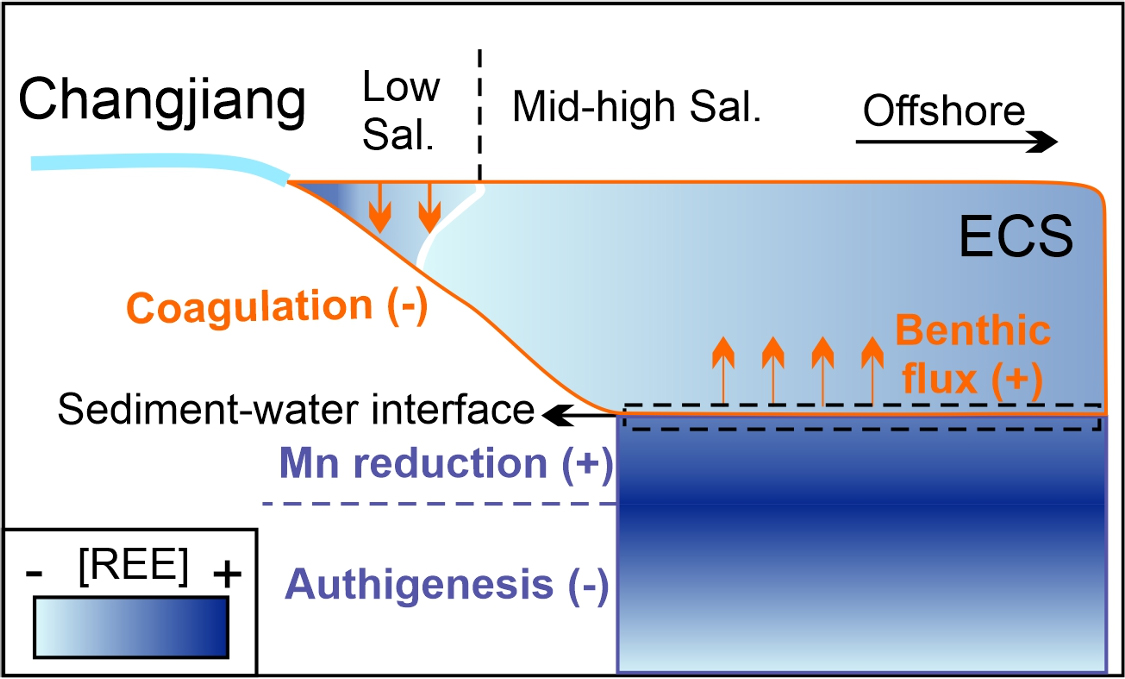Dominance of the benthic flux of rare earth elements on continental shelves
The rare earth elements (REEs) are widely used to track biogeochemical processes in the oceans. Nevertheless, source-to-sink processes for oceanic REEs remain poorly understood, leading to controversial hypotheses proposed to explain oceanic REE distributions: the top-down versus the bottom-up control. In particular, recent modelling efforts suggest that remobilization of continental margin sediments can be a major source of oceanic REEs. However, the sediment pore water REE data, which provide the direct evidence for a benthic dissolved flux, are still scarce.
Deng and his colleagues (2022, reference below) focus on one of the largest land–ocean interfaces in Asia, the Changjiang (Yangtze) River–East China Sea system. Sediment pore water REE data show that release of REEs, from shallow pore water to overlying seawater, is coupled to Mn reduction. In contrast, REEs are removed in deep pore water, perhaps via formation of an authigenic REE-bearing phase. Further calculations suggest that the advection-based benthic flux is the largest Nd source (~40 %) on the East China Sea shelf. Globally, however, despite a higher benthic Nd flux on the advection-dominated shelf, the much more extensive deep ocean may still dominate the total area-integrated benthic flux. These results highlight the need for precise constraints on the benthic source if REE/Nd isotopes are to be robustly used as process/source tracer in both marginal seas and on global scales.


Reference:
Deng, K., Yang, S., Du, J., Lian, E., & Vance, D. (2022). Dominance of benthic flux of REEs on continental shelves: implications for oceanic budgets. Geochemical Perspectives Letters, 22, 26–30. Access the paper: 10.7185/geochemlet.2223
